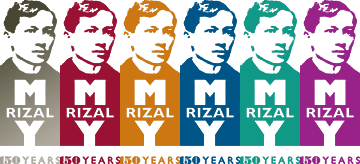by Manuel Garcia Calleja
 Pepe had it right from the start. He was born the seventh of eleven children. 7 and 11, the mapamahiin swear, are lucky numbers.
Pepe had it right from the start. He was born the seventh of eleven children. 7 and 11, the mapamahiin swear, are lucky numbers.
Pepe, unlike most of his contemporaries who lived destitute, was born into a wealthy clan. The original family name denoted or symbolized commerce or negosyo, but because there were at that time too many families in their place with the same appellation, Pepe’s family changed it to another one that was of Spanish origin meaning “green grass.”
Pepe had an ace up his sleeves when he entered this world. In his veins ran a bloodline that was a mingling of the West and the East – Chinese, Malayan, Japanese and Spanish. His father and kinfolk originated from a successful and prosperous trader from China. His mother and her clan are descendants of the last Malayan king of Tondo, Lakan Dula. A kin was of Japanese ancestry.
Pepe, well-nourished and a product of de-calidad forebears, showed at an early age a precocious intellect. He knew the alphabet at three and can read and write at five years old. A scholar uncle “instilled in the mind of the boy love for education,” while another uncle, noting Pepe was small and frail, worked on his physical development, teaching him swimming, self-defense, fencing, among other physical training. Another uncle taught Pepe painting and sculpture.
Because they had the means, Pepe was sent to such schools as Ateneo Municipal de Manila – where he graduated at the age of 16 with highest honors, University of Santo Tomas, Unibersidad Central de Madrid, University of Paris, and University of Heidelberg. He completed his surveyor training at 17 and his medical degree at 27. He also earned a degree in Philosophy and Letters and a doctorate in Opthalmology.
Pepe, indeed, was lucky not only in being born to a family of immense means but also in having kinfolk who cared for his mental and physical development.
Pepe was not a pampered child, however. Although he had a yaya hovering over him, he was treated the same way his siblings were treated by their elders. He had to toe the line or got whacked for transgressions which he even welcomed for they taught him what’s right, what’s wrong.
But it was not all books, fencing, swimming, painting, and sculpting for Pepe.
He had his share of flings and affairs of the heart with at least nine women (a paltry number compared to the 50 conquests of the “boss,” or so claimed by his drumbeaters). There were his puppy loves: the short girl Segunda Katigbak, who unfortunately was betrothed to another man, and the tall Leonor Valenzuela , whom he had to leave behind; Consuelo Ortiga, the prettier of DonPablo Ortiga’s daughters, O Sei San, daughter of a Samurai, who taught Pepe the Japanese art of painting called su-mie; the blue-eyed, buxom Gertrude Beckett, the pretty Nellie Boustead, Susan Jacoby from Brussels. And of course, his true love, Leonor Rivera, his girl for 11 years, their tragic love affair ending with Leonor marrying the Englishman Kipping because her mother disapproved of Pepe’s being a Filibustero. And the petite Irish Josephine Bracken whom Pepe ultimately married before his execution.
Pepe’s “all-around knowledge and abilities” drew admiration from his contemporaries like the venerable Dr. Adolp Meyer, Director of the Dresden Museum who was also awed by Pepe’s “stupendous…many-sidedness.” Di nakapagtataka, for Pepe, besides being a doctor of medicine, was an actor, agriculturist, anthropologist, archeologist, botanist, cartographer, conchologist, educator, ethnologist, fencer, humorist, ichthyologist, journalist, linguist, musician, mythologist, ophthalmologist, pharmacologist, philologist, philosopher, physical culturist, poet, polyglot, reformer, public relations man, researcher, rhetorician, scientist, sculptor, sharp shooter, sinologist, sociologist, zoologist, revolutionist, among other callings and expertises.
Sniffing, as they say, “something rotten in Denmark,” Pepe returned to the country in the late l880s to spearhead, not by the sword, but by his sharp pen, the fight against the oppressive rule of the country’s conquerors. Through his writings, Pepe assailed the “apparent backwardness of the Spanish rule’s method of governing the country” resulting “in the bondage and slavery of the conquered; forced labor and forced military service upon the natives; the abuse of power by means of exploitation; the government ruling that any complaint against the authorities was criminal; and making the people ignorant, destitute and fanatic, thus discouraging the formation of a national sentiment.”
Pepe, without fear, “censured the friars for abusing the advantage of their positions as spiritual leaders…also censured the priests who preached greed and wrong morality,” while at the same time “counseled the Filipinos not to resent defects attributed to them but to accept same as reasonable and just… advised the masses that the object of marriage was the happiness and love of the couple and not financial gains… advised everyone that love and respect for parents must be strictly observed.”
It is said that in times of great trouble, chaos and oppression, God comes down or sends someone to set things right. And so God came down during the terrible Holocaust years. In more recent times, God sent a good and determined man named Ninoy whose martyrdom kindled the fire of revolution that stopped the dictatorial advances of the man from Paoay.
In a much earlier time, God, seeing his God-loving little brown people being driven to the ground, sent a “versatile genius” who, according to Professor Ferdinand Blumentritt, rector of the Imperial Atheneum of Leitmeritz, .. “was the greatest product of the Philippines and” whose “coming was like the appearance of a rare comet, whose rare brilliance appears only every other century.” That man was Pepe, also reverently known as Gat Jose Rizal.
Sources:
http:www.joserizal.ph/chu i.ntmi
Jose Rizal Tanglaw ng Kabataan byTeresita Buensuceso, Josefina Pe
Photo: “Dr. Jose Protacio Rizal” by Jek Bacarisas, c/o Flickr. Some Rights Reserved
Article originally appeared here.
